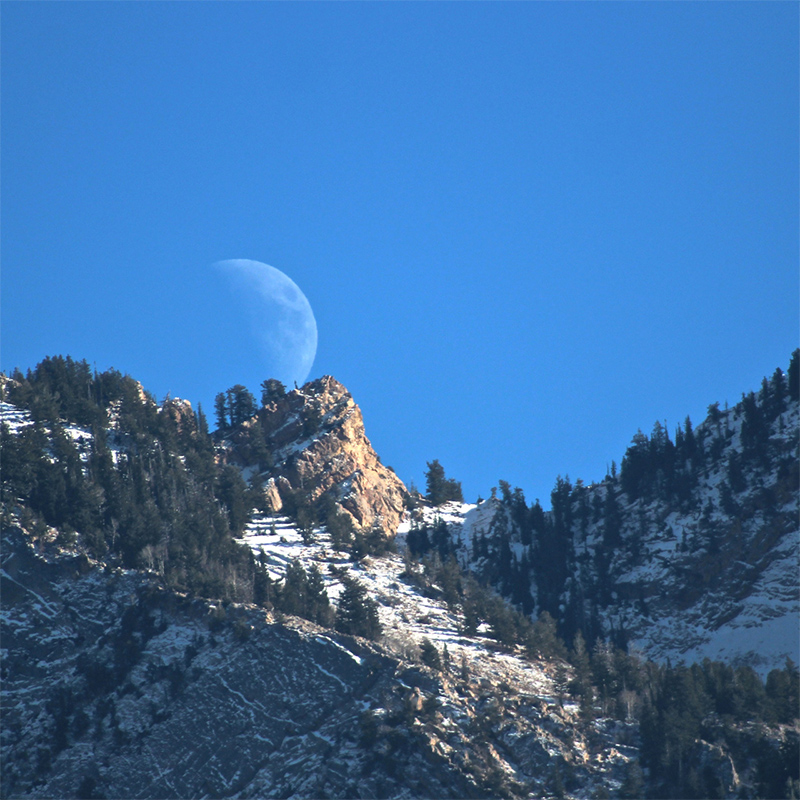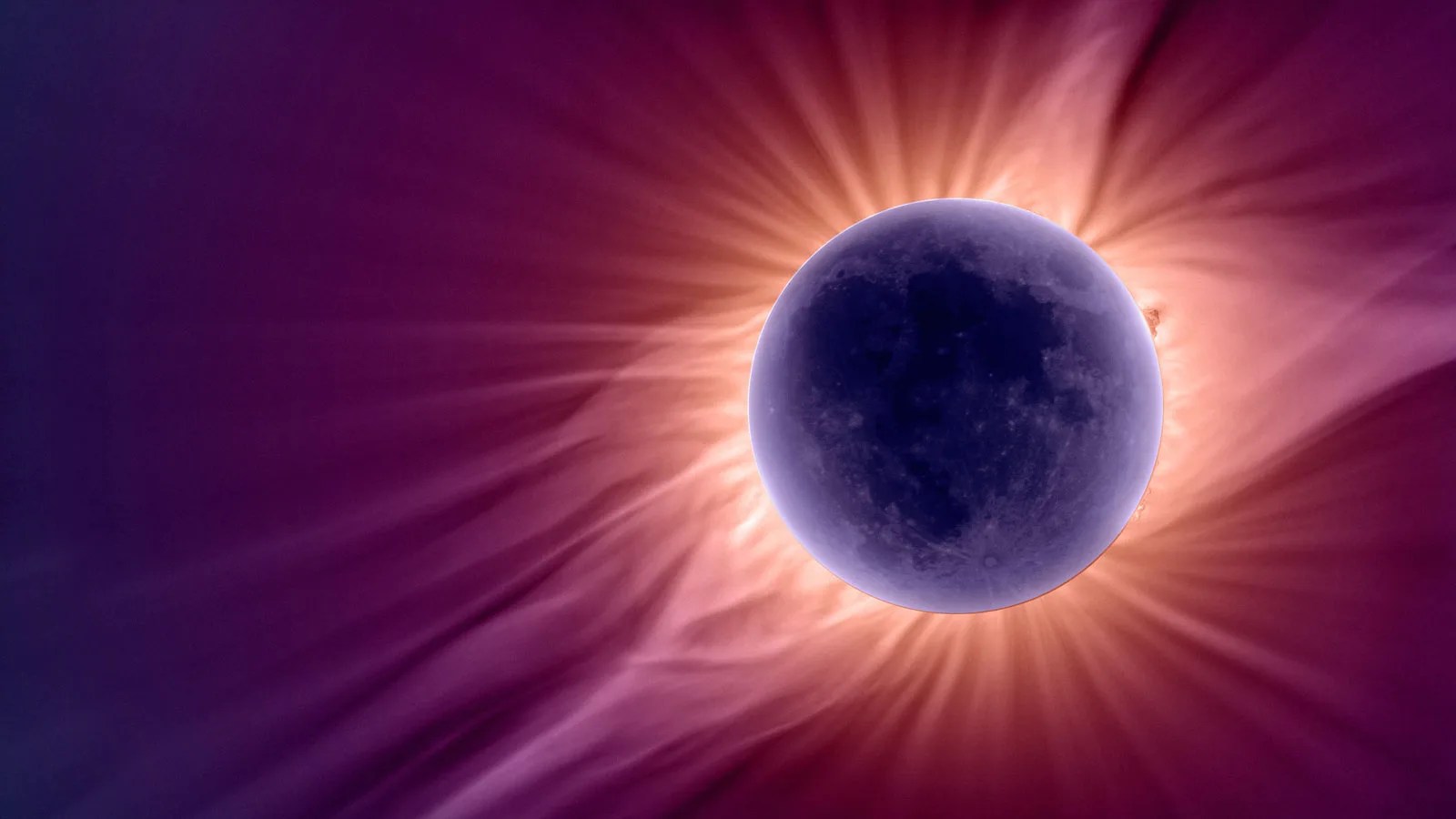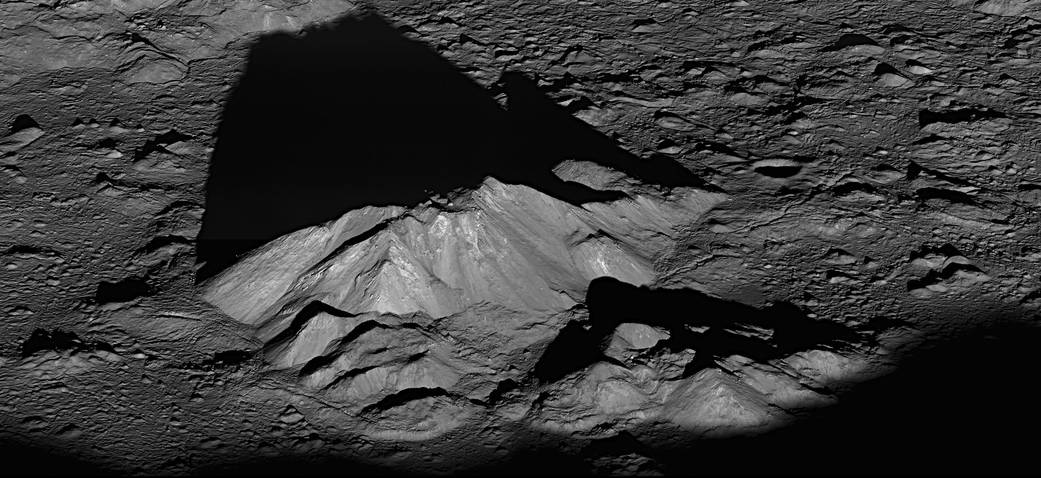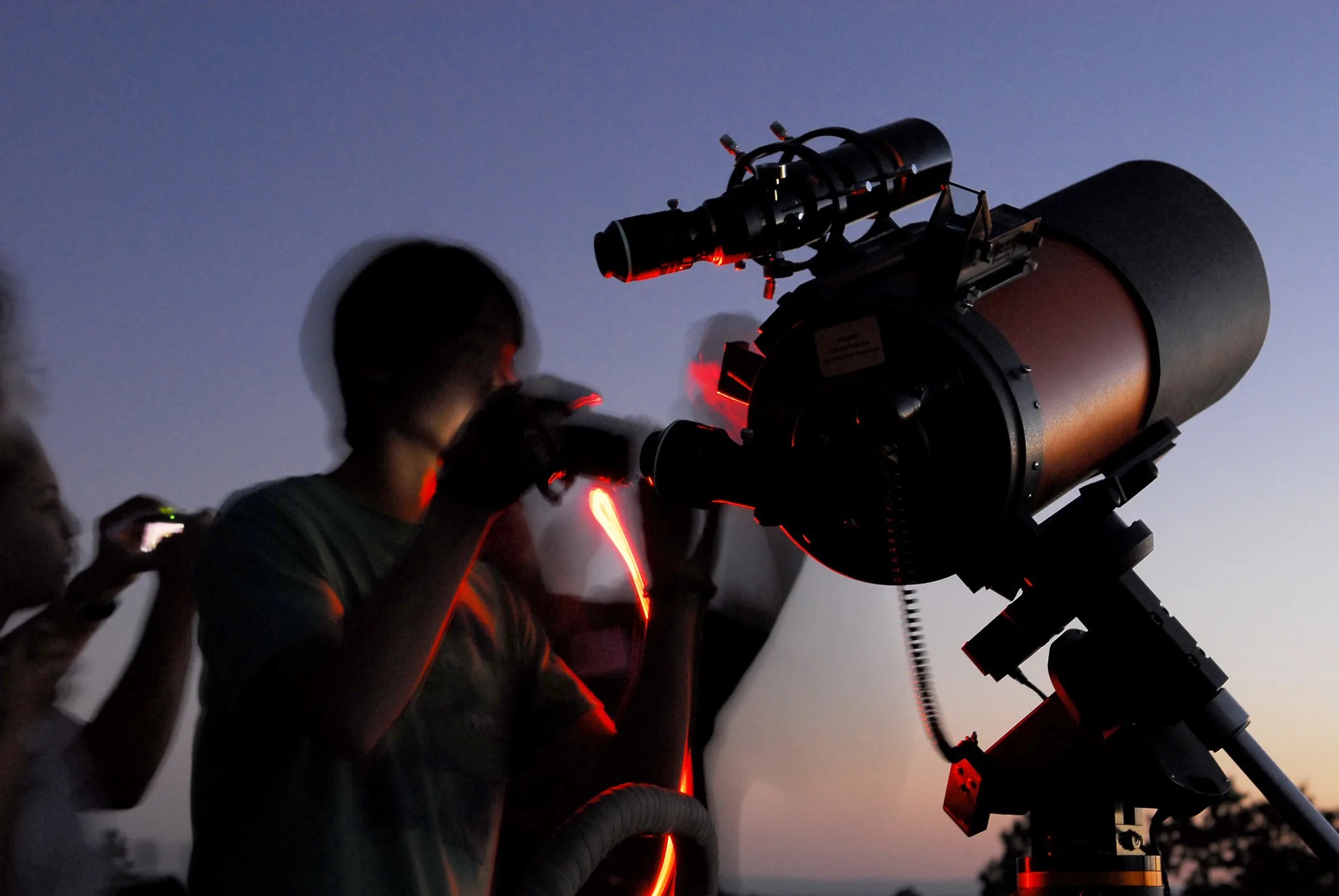Moon Phases
Imagine you’re in a spaceship, traveling away from Earth. As you sail onward, you see our planet and its Moon locked together in their endless, circling, gravitational embrace. Your distant view gives you a unique perspective on the Moon that can be hard to visualize from the ground, where the Moon appears to sweep through the sky as an ever-changing globe of light.
From your astronaut’s viewpoint, you can see that the Moon is an average of 238,855 miles (384,399 km) from Earth, or about the space that could be occupied by 30 Earths. It travels around our planet once every 27.322 days in an elliptical orbit, an elongated circle. The Moon is tidally locked with Earth, which means that it spins on its axis exactly once each time it orbits our planet. Because of this, people on Earth only ever see one side of the Moon. We call this motion synchronous rotation.
Daily Moon Guide
Check out NASA's interactive map for observing the Moon each day of the year.
Go to the guide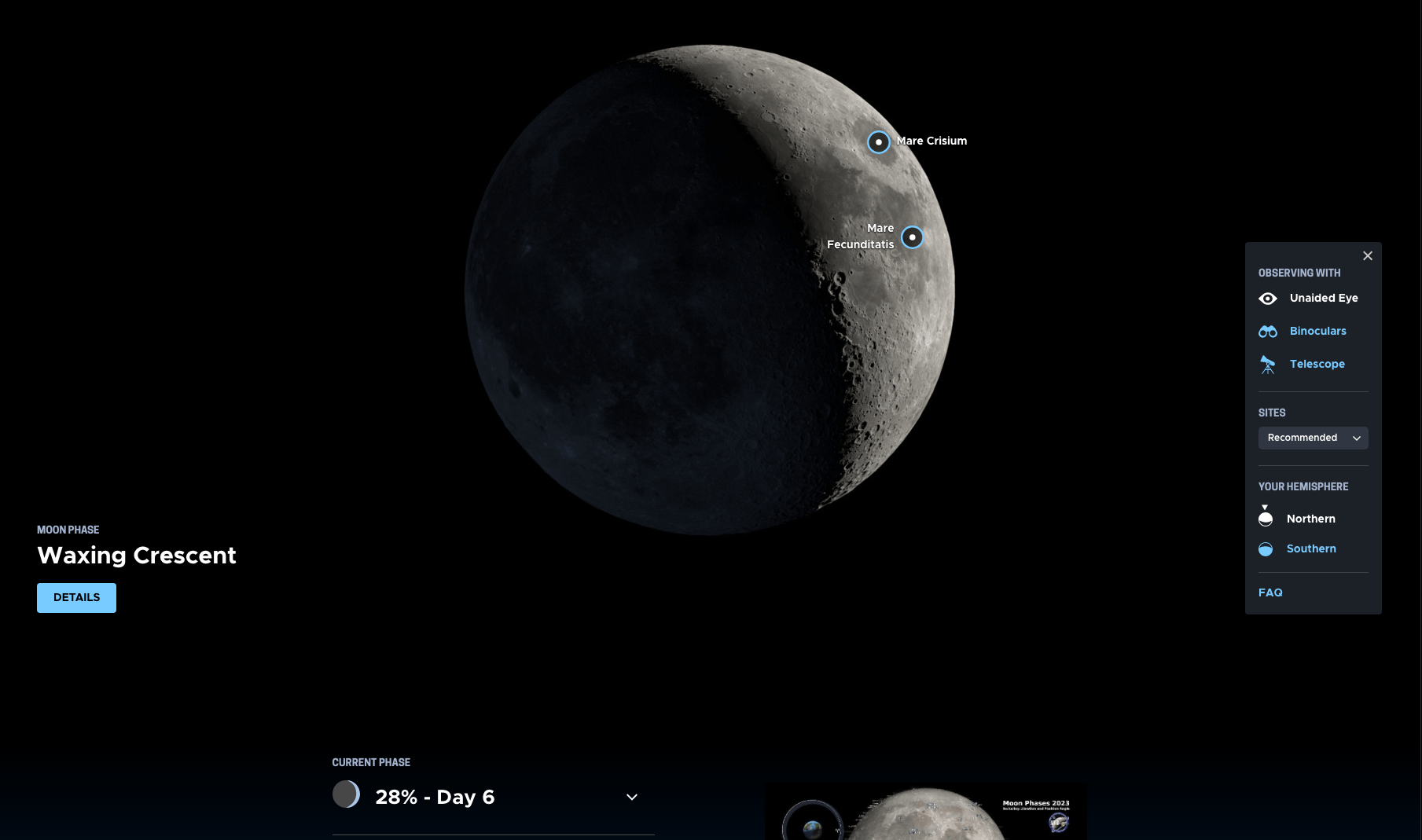
In our entire solar system, the only object that shines with its own light is the Sun. That light always beams onto Earth and Moon from the direction of the Sun, illuminating half of our planet in its orbit and reflecting off the surface of the Moon to create moonlight.
Like Earth, the Moon has a day side and a night side, which change as the Moon rotates. The Sun always illuminates half of the Moon while the other half remains dark, but how much we are able to see of that illuminated half changes as the Moon travels through its orbit.
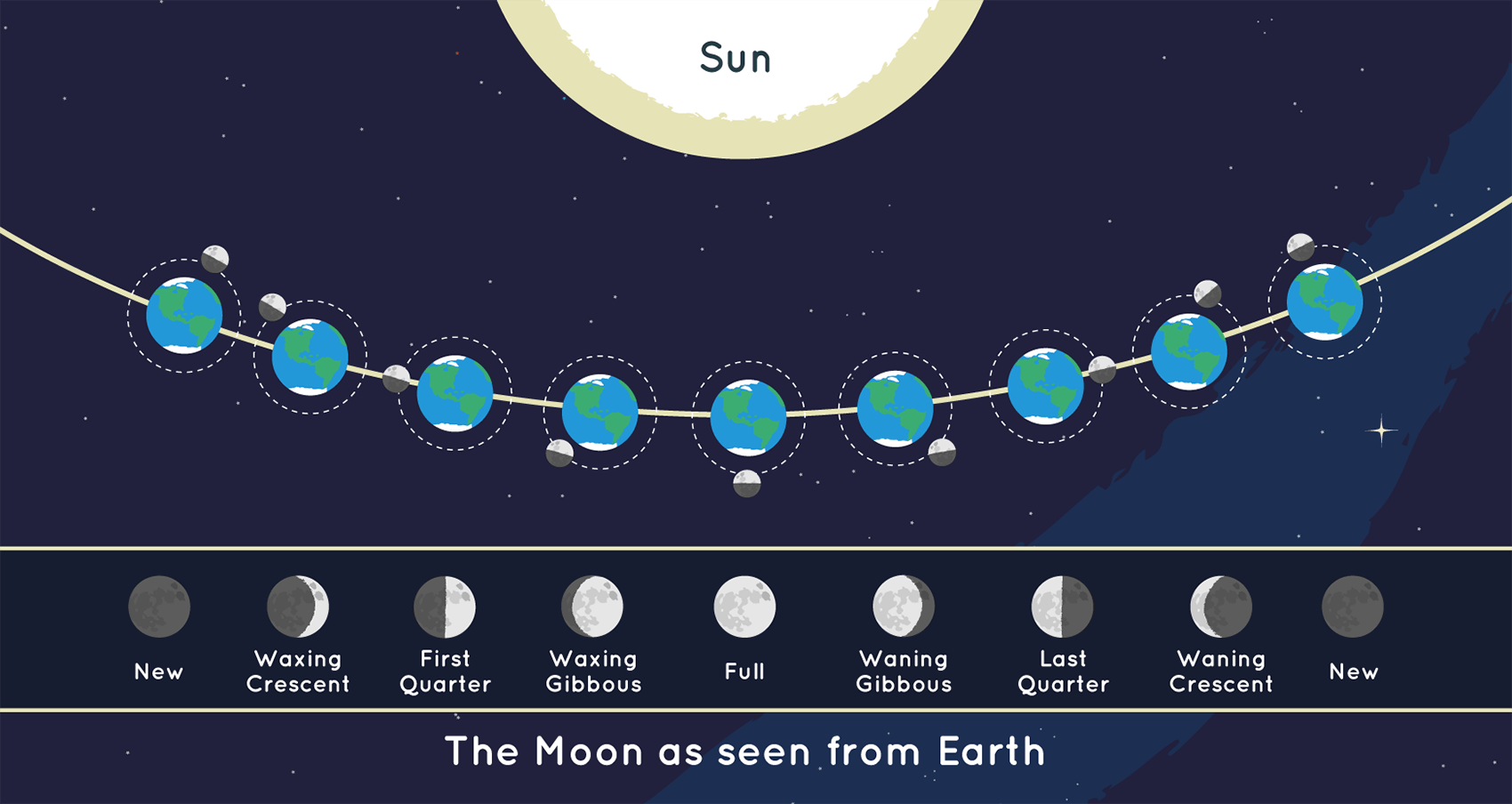
Let’s take a look at the individual phases, and how the movements of the Moon and Sun appear to us as we watch from the Northern Hemisphere on Earth:
This is the invisible phase of the Moon, with the illuminated side of the Moon facing the Sun and the night side facing Earth. In this phase, the Moon is in the same part of the sky as the Sun and rises and sets with the Sun. Not only is the illuminated side facing away from the Earth, it’s also up during the day! Remember, in this phase, the Moon doesn’t usually pass directly between Earth and the Sun, due to the inclination of the Moon’s orbit. It only passes near the Sun from our perspective on Earth.
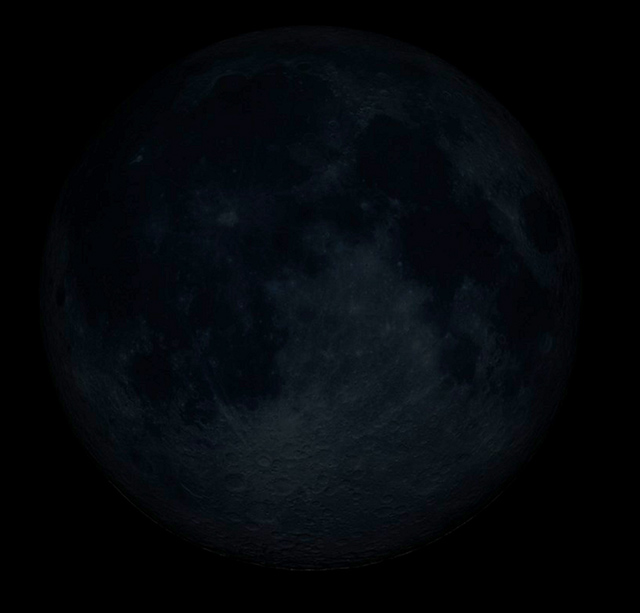
This silver sliver of a Moon occurs when the illuminated half of the Moon faces mostly away from Earth, with only a tiny portion visible to us from our planet. It grows daily as the Moon’s orbit carries the Moon’s dayside farther into view. Every day, the Moon rises a little bit later.
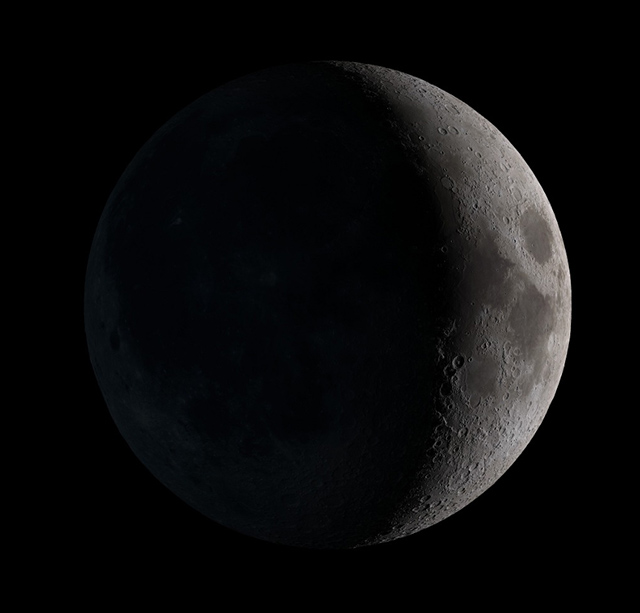
The Moon is now a quarter of the way through its monthly journey and you see half of its illuminated side. People may casually call this a half moon, but remember, that’s not really what you’re witnessing in the sky. You’re seeing just a slice of the entire Moon ― half of the illuminated half. A first quarter moon rises around noon and sets around midnight. It’s high in the sky in the evening and makes for excellent viewing.
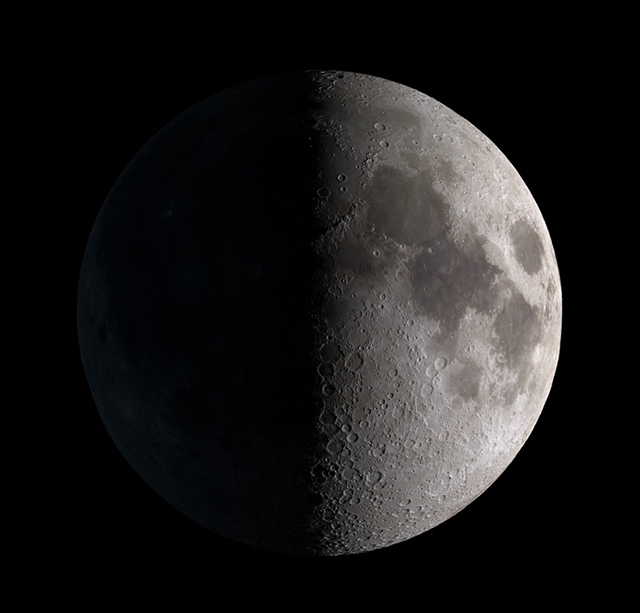
Now most of the Moon’s dayside has come into view, and the Moon appears brighter in the sky.
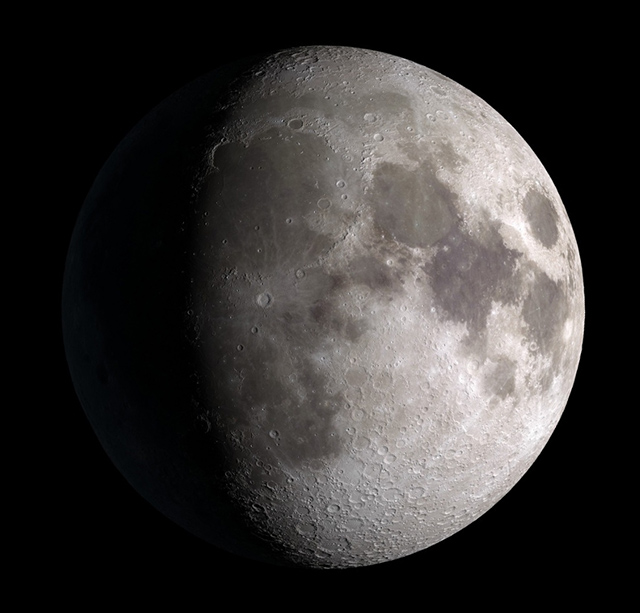
This is as close as we come to seeing the Sun’s illumination of the entire day side of the Moon (so, technically, this would be the real half moon). The Moon is opposite the Sun, as viewed from Earth, revealing the Moon’s dayside. A full moon rises around sunset and sets around sunrise. The Moon will appear full for a couple of days before it moves into…

As the Moon begins its journey back toward the Sun, the opposite side of the Moon now reflects the Moon’s light. The lighted side appears to shrink, but the Moon’s orbit is simply carrying it out of view from our perspective. The Moon rises later and later each night.
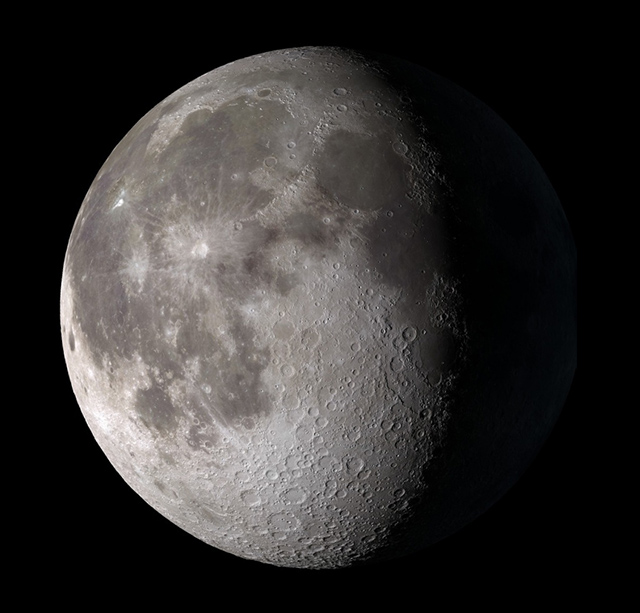
The Moon looks like it’s half illuminated from the perspective of Earth, but really you’re seeing half of the half of the Moon that’s illuminated by the Sun ― or a quarter. A last quarter moon, also known as a third quarter moon, rises around midnight and sets around noon.
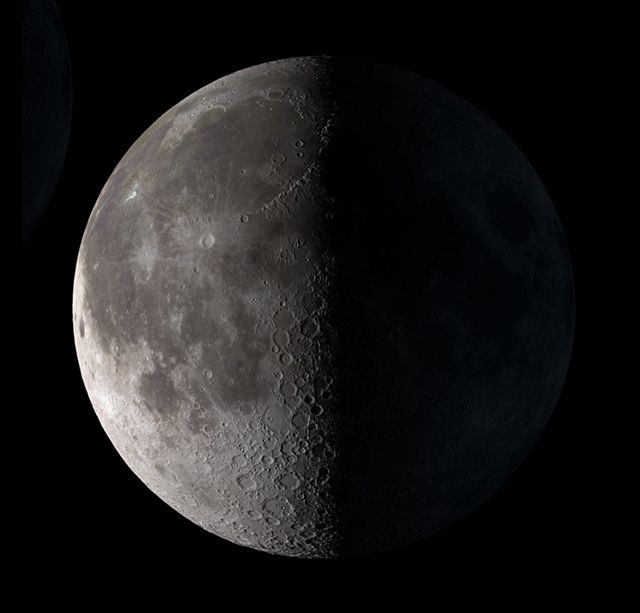
The Moon is nearly back to the point in its orbit where its dayside directly faces the Sun, and all that we see from our perspective is a thin curve.
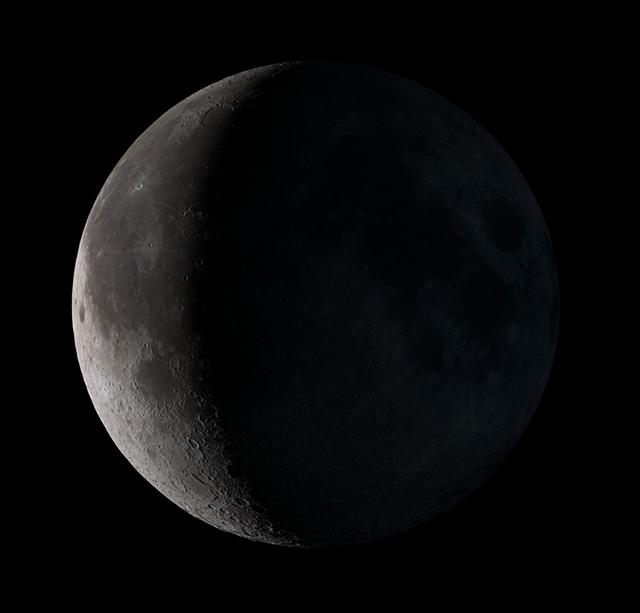
When we think of the way the Moon seems to change over the course of a month, we think of phases. But frequent Moon observers know that the Moon also appears to twist, nod, and roll slightly during its journey across the sky, allowing us to peek around the Moon's shoulder and catch glimpses of the farside. This phenomenon is called libration.
Because the Moon's orbit is not perfectly circular, its distance from Earth and its speed in orbit both change slightly throughout the month. The Moon’s rate of rotation around its own axis, though, always stays the same.
When the Moon is at its closest to Earth and moving most quickly along its orbital path, the Moon itself doesn’t rotate quite fast enough to keep entirely the same side facing us, and we get to see a little more of the eastern side of the Moon. When the Moon is farthest from Earth and orbiting at its slowest, its rotation gets a little ahead, and we see a bit more of its western side. We call this motion “libration in longitude.”
The 5 degree tilt of the Moon’s orbit also causes it to appear to nod, as though it were saying “yes.” The tilt sometimes brings the Moon above Earth’s northern hemisphere, and sometimes below Earth’s southern hemisphere, allowing us to see slightly more of the northern or southern hemispheres of the Moon. We call this motion “libration in latitude.”
Finally, the Moon appears to tilt back and forth like a metronome. The tilt of the Moon’s orbit contributes to this, but it’s mostly due to the tilt of our Earth. Earth has a tilt of 23.5 degrees on its axis, which means that when we observe the Moon from Earth, it’s a little like we’re standing sideways on a ramp. If you look left, the ramp slopes up. If you look right, the ramp slopes down. In front of you, the horizon looks higher on the right and lower on the left. If you turn around, the horizon appears to tilt the opposite way.
The tilted ramp works the same as the tilted “platform” of the Earth beneath our feet. Every two weeks, we have to look in the opposite direction to see the Moon, and the ground beneath our feet is then tilted the opposite way as well.
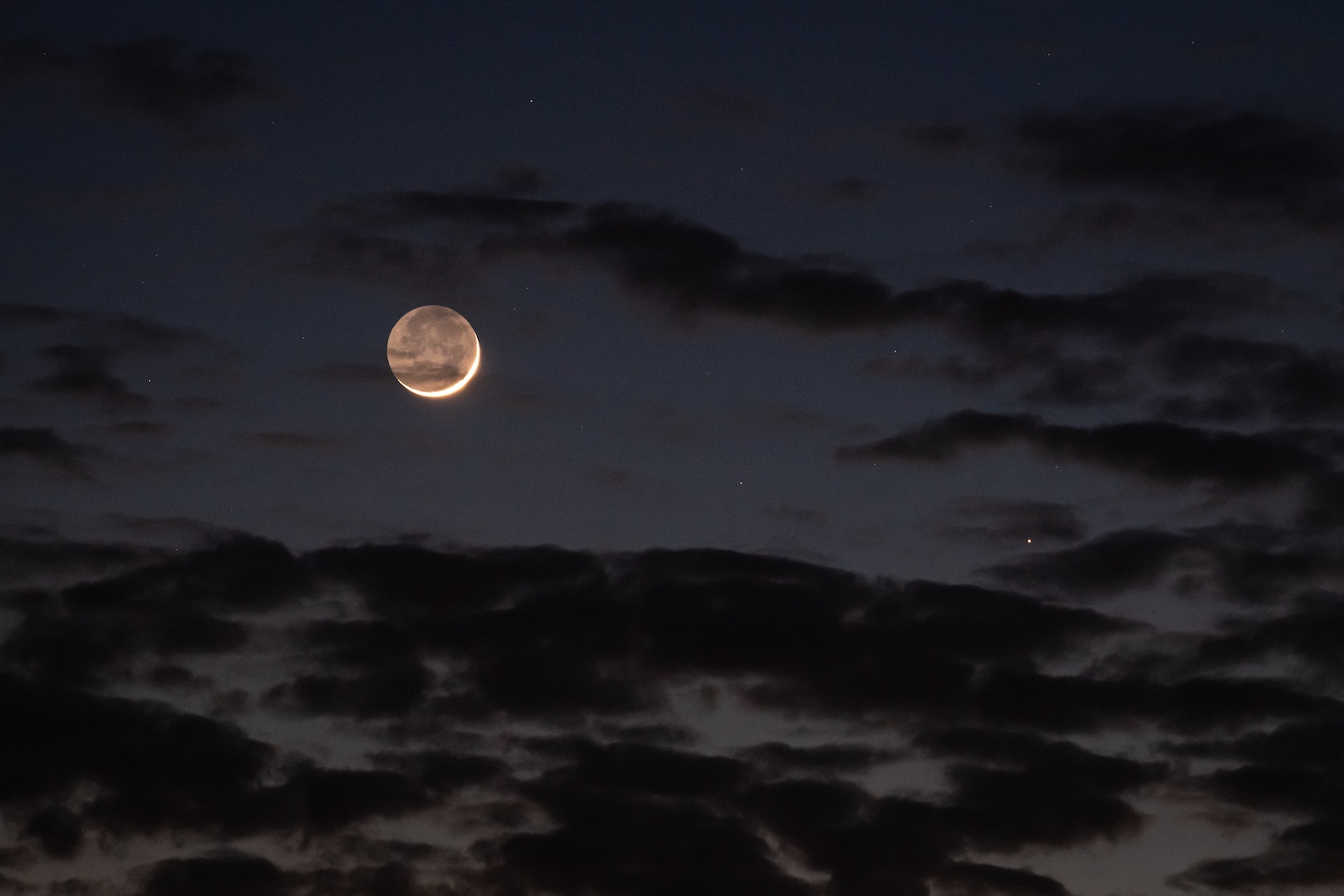
Sometimes, when the Moon is in one of its crescent phases, we can still see the darkened area of the Moon’s nearside shining dimly. This effect is caused by the Sun’s light reflecting off Earth’s surface onto the face of the Moon. Because Earth at that point in its orbit is nearly full from the Moon’s perspective, the light it reflects, called earthshine, is bright enough to dimly illuminate the darkened surface.
Though the Moon is often thought of as a nighttime visitor, it’s also visible during the day as a faint, pale presence. The best times to see a daytime Moon are perhaps during the first and last quarter phases, when the Moon is high enough above the horizon and at about 90 degrees from the Sun in the sky. This helps make the Sun’s reflected light bright enough to see as it reflects off of the Moon. The Moon can be seen in the daylit sky at any phase except for the new moon, when it’s invisible to us, and full moon, when it’s below the horizon during the day. The crescent through quarter phases are high in the sky during the day, but the daytime gibbous phases can be glimpsed only just before the Sun sets.
